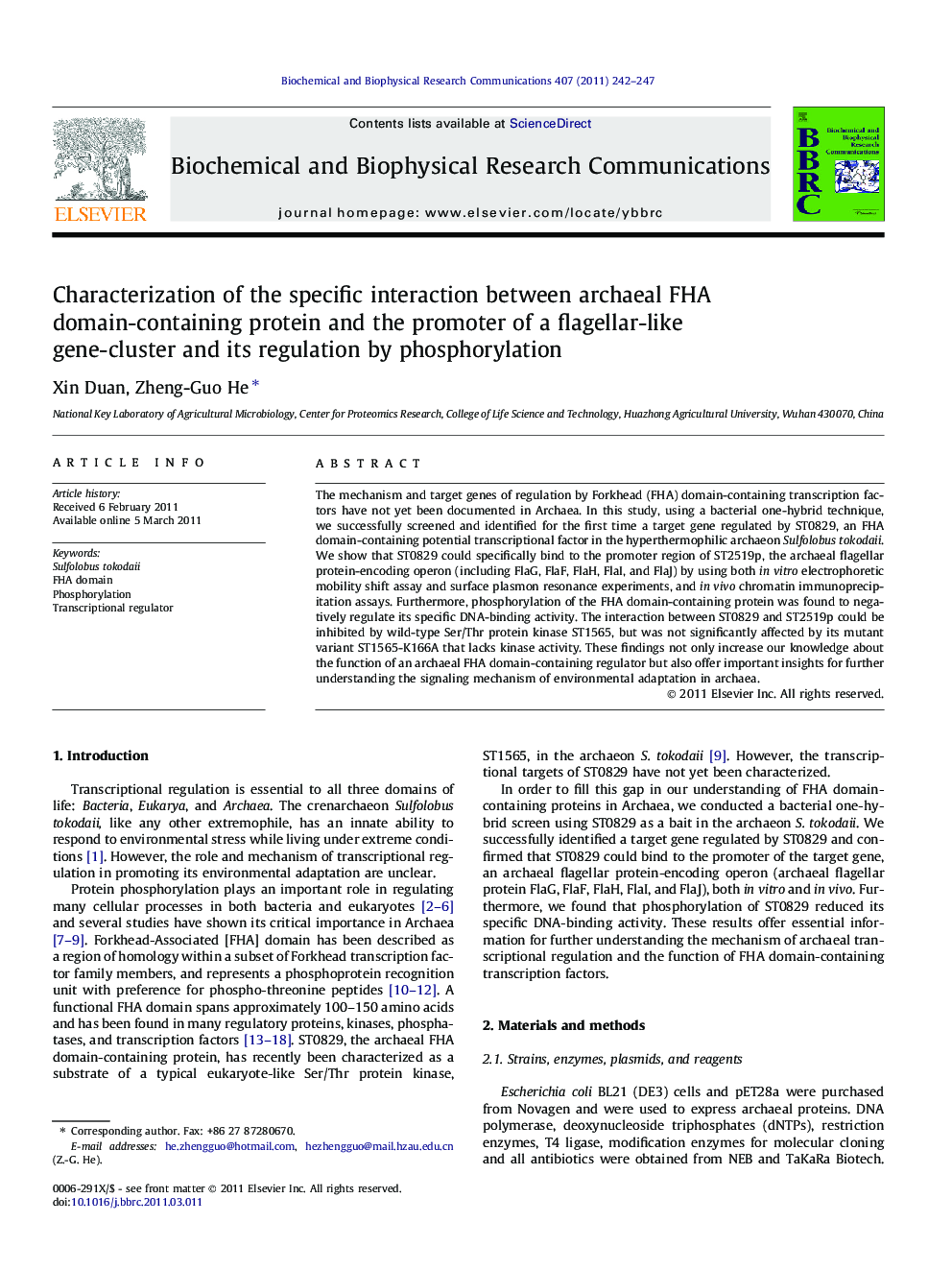| Article ID | Journal | Published Year | Pages | File Type |
|---|---|---|---|---|
| 1930885 | Biochemical and Biophysical Research Communications | 2011 | 6 Pages |
The mechanism and target genes of regulation by Forkhead (FHA) domain-containing transcription factors have not yet been documented in Archaea. In this study, using a bacterial one-hybrid technique, we successfully screened and identified for the first time a target gene regulated by ST0829, an FHA domain-containing potential transcriptional factor in the hyperthermophilic archaeon Sulfolobus tokodaii. We show that ST0829 could specifically bind to the promoter region of ST2519p, the archaeal flagellar protein-encoding operon (including FlaG, FlaF, FlaH, FlaI, and FlaJ) by using both in vitro electrophoretic mobility shift assay and surface plasmon resonance experiments, and invivo chromatin immunoprecipitation assays. Furthermore, phosphorylation of the FHA domain-containing protein was found to negatively regulate its specific DNA-binding activity. The interaction between ST0829 and ST2519p could be inhibited by wild-type Ser/Thr protein kinase ST1565, but was not significantly affected by its mutant variant ST1565-K166A that lacks kinase activity. These findings not only increase our knowledge about the function of an archaeal FHA domain-containing regulator but also offer important insights for further understanding the signaling mechanism of environmental adaptation in archaea.
► In this study, we screened the first target gene for the archaeal FHA domain-containing transcription factor, ST0829. ► ST0829 specifically interacts with the promoter region of the archaeal flagellar protein-encoding operon both in vitro and invivo. ► Phosphorylation of the FHA protein negatively regulates its specific DNA-binding activity.
